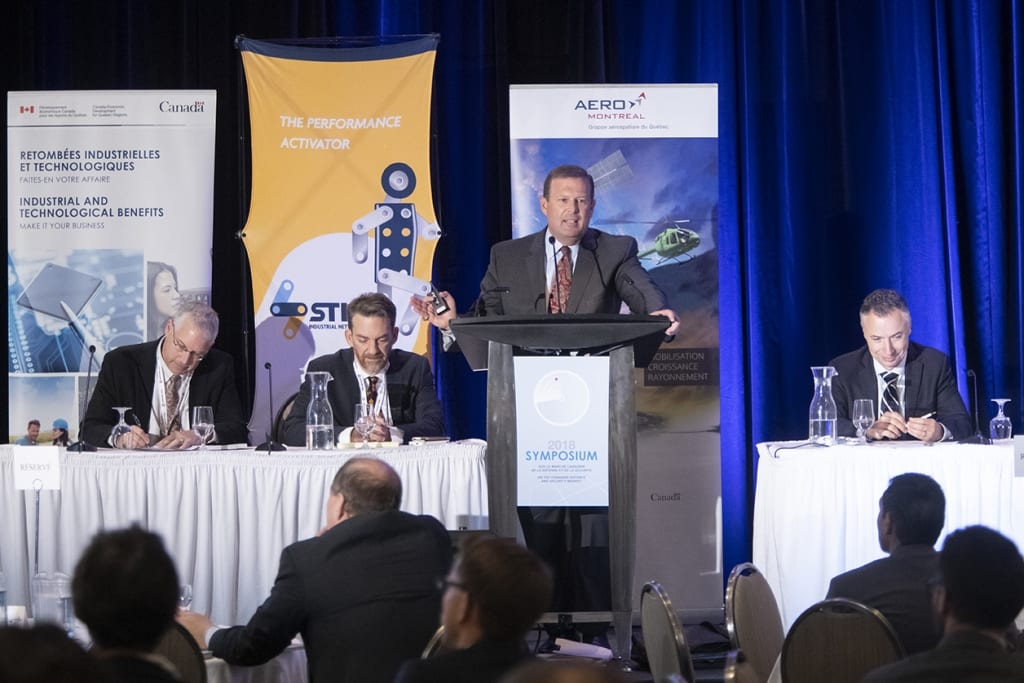
Discussing Canadian aerospace at the Symposium on the Canadian Defence and Security Market 2018. (Aero Montreal)
Bombardier and the government of Québec have invested in Aéro21 and SA²GE, two Canadian aerospace research projects focused on efficient manufacturing and environmentally friendly flight.
“Through this strong alliance between industry, government and researcher partners, we are proud to not only push the limits of technology and build greener, more efficient aircraft, but to also increase the competitiveness of the Québec aerospace industry,” said François Caza, Bombardier CTO.
Short for “Aeronautics in the 21st Century,” Aéro21 was launched in 2013 to help “develop and advance critical technologies for existing and new aircraft configurations” that are more efficient, according to Canada’s Action Plan to Reduce Greenhouse Gas Emissions in Aviation released by the Ministry of Transport in 2013. Bombardier’s participation in the project will focus on digital modeling to bring parts to market faster and reduce development costs, the company said in a release. Pratt & Whitney and Presagis have also submitted subprojects for Aéro21, according to the Québecois government.
There are 24 companies combining to contribute 75 percent of Aéro21’s total $50 million in investments over three years, with the Québecois government supplying the remaining 25 percent; Bombardier is putting up $14.3 million.
SA²GE is a research project being undertaken by the non-profit Coalition for Greener Aircraft. First launched in 2010, SA²GE is now entering its third phase, which consists of four subprojects, each undertaken by a company providing a government-matched investment totaling $38 million.
- Bombardier is investing a government-matched $2.7 million into one of these subprojects, AILE, which aims to develop multifunctional wing concepts for business and commercial aircraft whose aerodynamics can reduce fuel consumption.
- Another subproject, PUSH by Bell Canada, is focused on improved efficiency in vertical-takeoff-and-landing aircraft while minimizing weight and noise.
- Esterline’s CMC Electronics is working on eco-friendly navigation technologies in a subproject called ÉcoNav-3.
- TeraXion is trying to reduce the footprint of bulky CNS avionics by developing optical-photonic technologies.
“Aerospace in Québec is more than an important vehicle for high-paying jobs, high technologies and innovations; it is a source of great pride that shines our talents on a global scale,” said Pierre Fitzgibbon, minister of the economy and innovation for the Canadian province. “It is also an important lever for the development of our economy. But to maintain our position as one of the world’s leading aerospace companies, we need to support our industry so that it can continue to innovate and stand out and become even more competitive.”
Neither the government of Québec nor Bombardier have released a timeline for these phases of the projects.